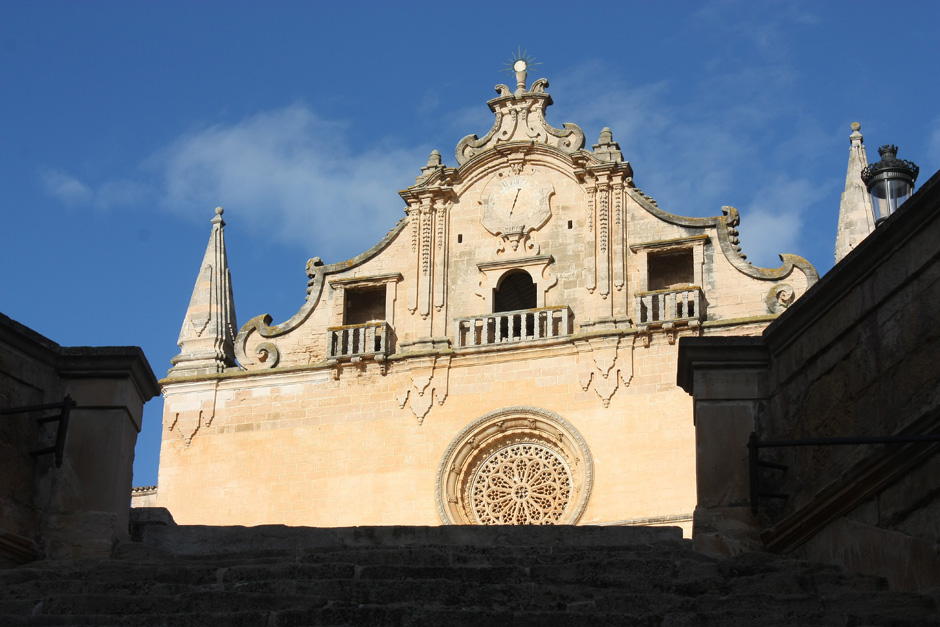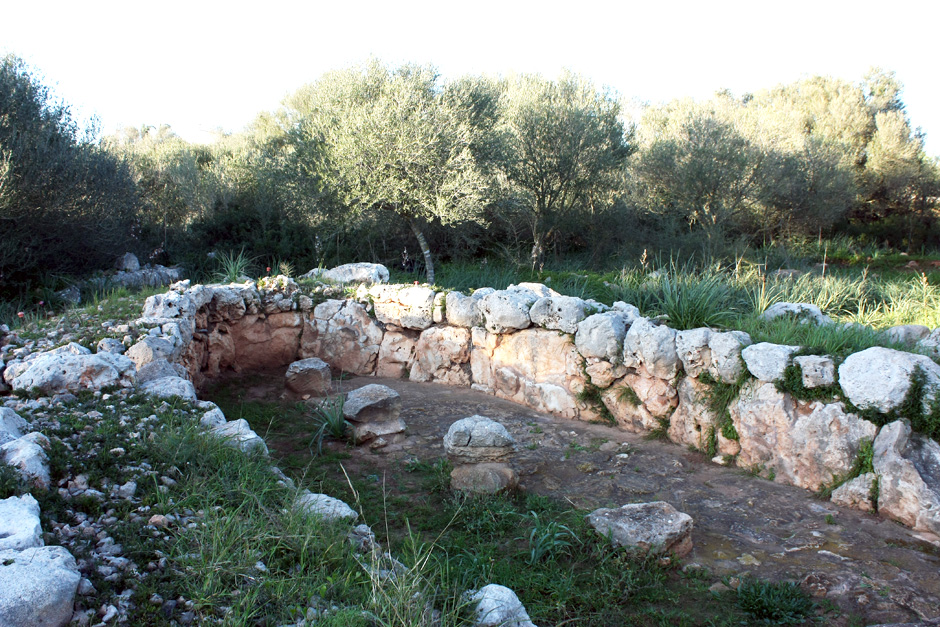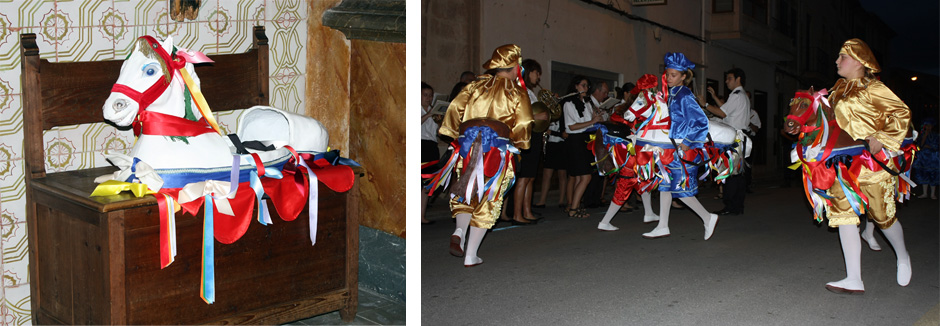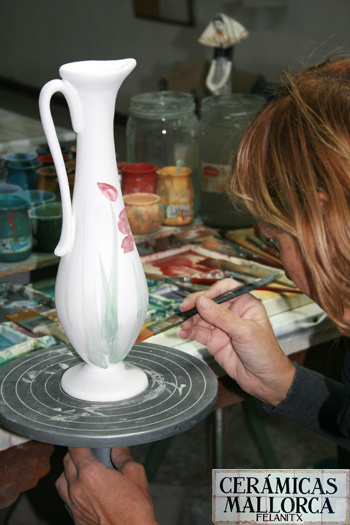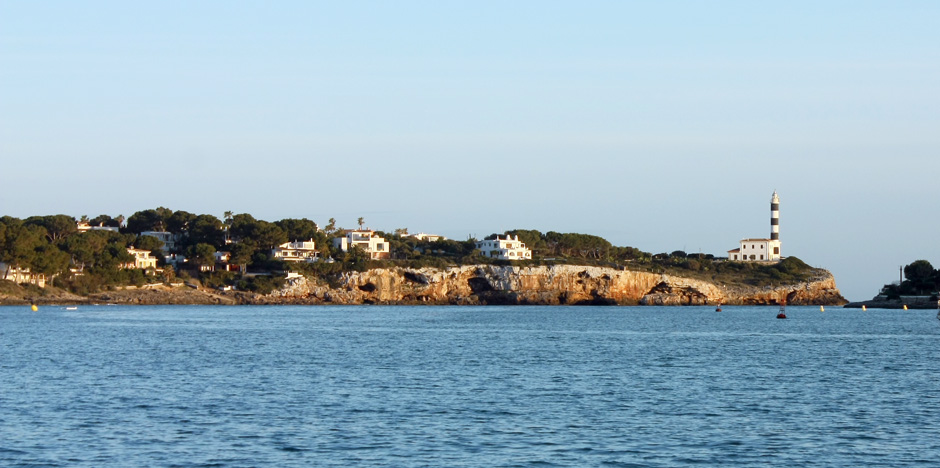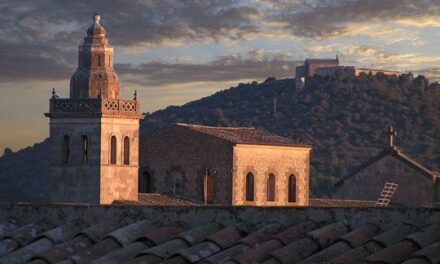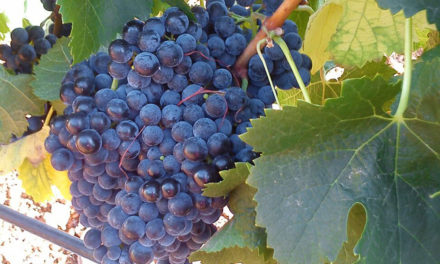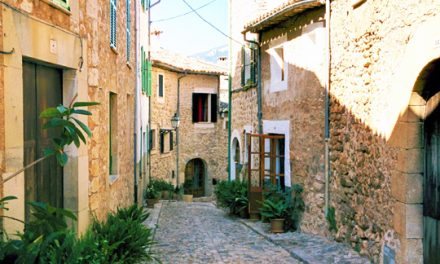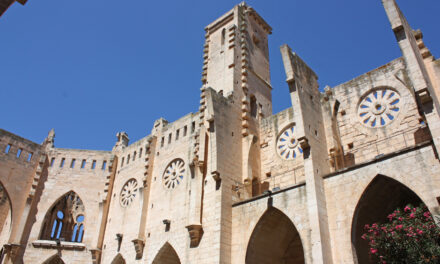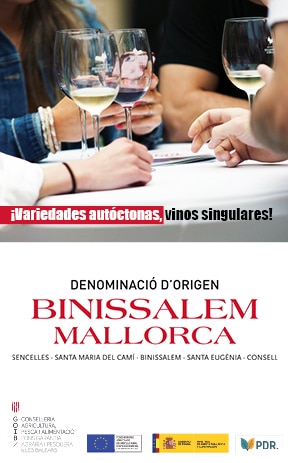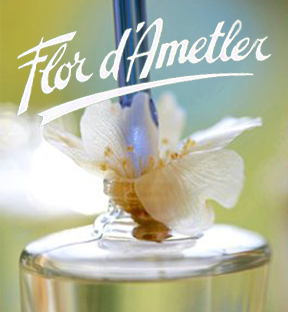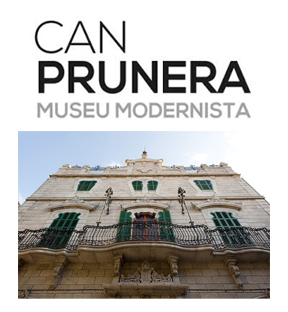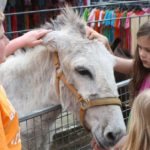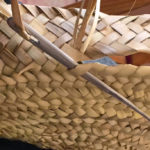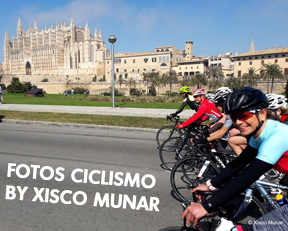Felanitx’s History dates back to the bronze age, when the first settlers came to the Castell de Santueri and Puig de Sa Mola.
C’an Gaià and Son Maiol are two of the historical buildings that have been preserved. The Castell de Santueri served as a fortress during Roman and Muslim times, becoming one of the most strategic and important places in Felanitx, Mallorca.
Portocolom, The Port of Felanitx, was well known due to the regular pirate raids.
Felanitx’s History, Tradition and Crafts
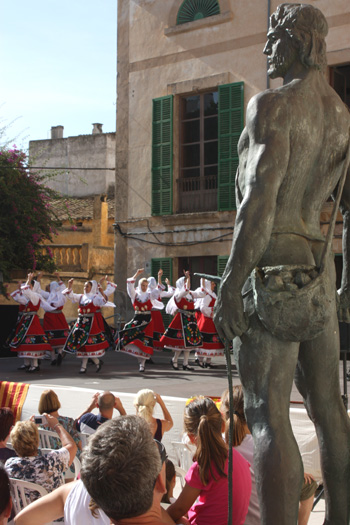
Els Cavallets: Els Cavallets de Felanitx are among the most emblematic figures of cultural tradition in Felanitx and all of Mallorca, it is one of the town’s oldest legacies and has been named a “Fiesta of Cultural Interest”.
Sant Joan Pelós: A young man dressed in a skirt and red silk cloak, representing Saint John the Baptist, dances through the streets of Felanitx, wearing a mask and tin crown. This traditional dance and music is another “Fiesta of Cultural Interest”.
Els Salers: This group of young men, dressed in white shirts and jeans, take to the town’s streets on the last day of Easter, singing and dancing, begging for the last of the Easter supplies (“Panades” and “Robiols”). After they walk round Felanitx they climb up to the Puig de Sant Salvador.
Crafts
The town’s crafts include one of the island’s most well-known artistic and traditional style of pottery. Known as the Gerreta Felanitxera.
There are craftsmen of this pottery, such as Cerámicas Mallorca, in the town down to this day. Most of the Gerretes that are still preserved were made between the 19th and 20th century, but the Museo Etnológico, in Muro, is home to the oldest Gerreta, dating back to the 16th century.
Visit the most interesting points in Felanitx, Mallorca.
Felanitx’s History, Tradition and Crafts
